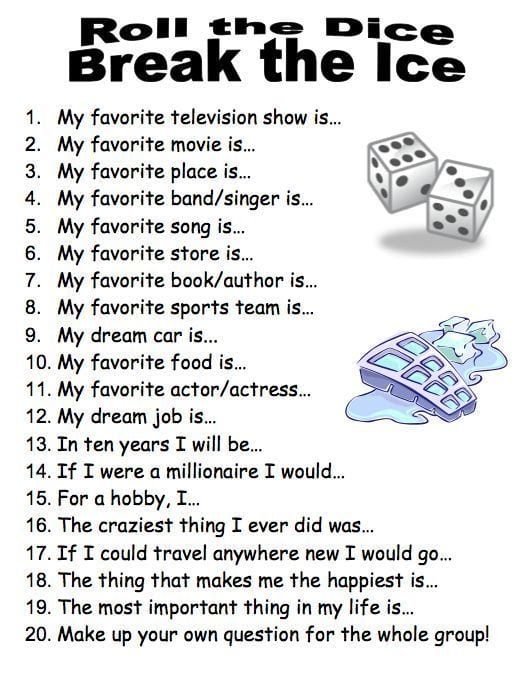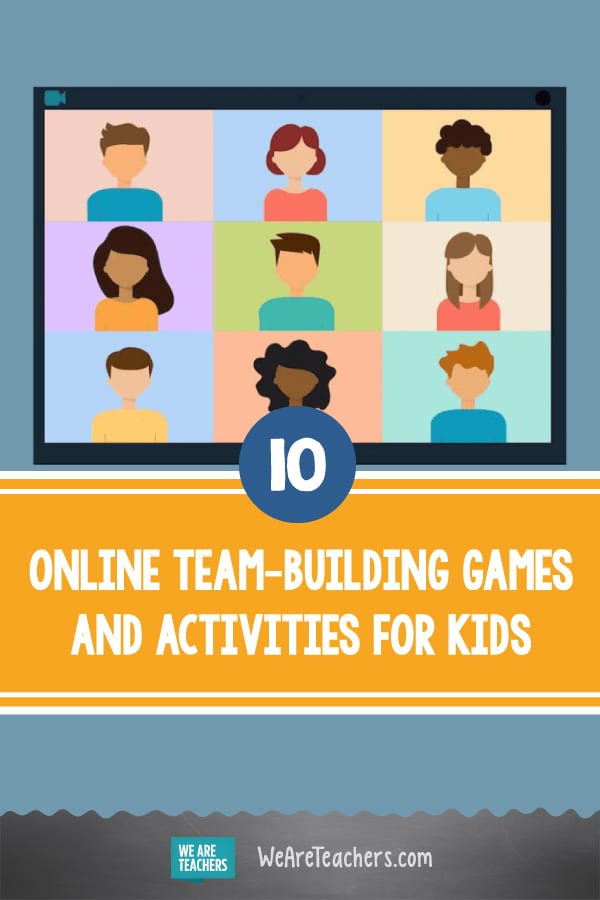Team-building games and activities help students in so many ways. They learn to work together, listen carefully, communicate clearly, and think creatively. They also get the chance to know each other better, which is important now more than ever if they are learning online. But how do you structure these activities remotely? We’re here to help with ten online team-building activities your students will love. And if you’re looking for team-building activities for the classroom, we have those too!
1. Dicebreakers

Icebreaker questions are a fun way to get to know one another. Make up your own or ask your students to help you brainstorm a list of interesting questions. One at a time, students will roll a dice virtually with this online dice roller and then answer the questions!
SOURCE: MissLifeSaver
2. Opinions
This activity reveals like minds in the classroom. Ask students to grab four sheets of paper and color them according to the following labels: red = strongly disagree, orange = disagree, blue = agree, and purple = strongly agree. Next, read a statement such as “Students should get longer recess.” or “Cats are better than dogs.” Students hold up their color paper to represent how much they agree or disagree with this opinion.
[contextly_auto_sidebar]
3. Detective

kid detective
This game requires teamwork and close observation. Choose one student as the detective. They will mute their device, close their eyes, and count to thirty. Meanwhile, choose another student as the leader. The leader begins a motion, for instance tapping the top of their head. The rest of the students quickly begin following along. The detective can now unmute and observe. After a short period of time, the leader changes the motion, for instance clapping their hands, and the rest of the students follow along. The detective has to figure out which student is the leader. The detective gets three guesses. Then a new leader and detective are chosen for the next round.
4. Story Chain
Start a story with an engaging hook. For instance, “One day I was walking through a shady forest. I thought I was alone, but all of a sudden …” Have students raise their hand if they want to tell the next portion of the story. Choose one to continue the story (just a line or two) and then they can choose the next storyteller in the same way. Continue until everyone who wishes has had one chance to contribute. Feel free to jump back and bring the story to a close if it is floundering.
5. Mystery Person
Have your students fill an interest inventory, like this one. You can have them do it during class hours or email it out as homework they can submit to you. Be sure to have students put a star next to anything they would rather you not share with others. After you receive all the inventories, you can play the game. Share three answers from one student’s inventory and give students a chance to guess who you’re talking about. If no one guesses correctly, give one more clue. Continue until someone guesses or the person reveals themself to the group.
6. Memories

Ask students to close their eyes and think about some of their best memories. This could be a time with their family, friends, or anyone in their life. Give them a minute or so to think. Now ask them to narrow their thoughts down to one specific happy memory. Give each child one minute to share the memory with their classmates and explain why they think it’s one of their best.
7. Two Truths and a Fib
This is a school-age appropriate twist on the classic get-to-know-you game. Ask students to think of some things that the other students may not know about them. For instance, “I have 17 cousins”, “I can do a backflip on the trampoline”, or “My favorite food is squid”. Next, have them write two of their ideas down plus something that could be true, but isn’t. For example, “I won first place in a writing contest” or “My grandmother is from Zimbabwe.” To play have each student read their three items in whatever order they choose. The other students have to guess which of the statements is the fib.
8. Someone I Admire
This activity is pretty straightforward. Each person takes a turn stating someone whom they admire: whether alive or historical. The student also describes the traits, attributes, and/or accomplishments that make that person worthy of admiration.
This exercise really helps everyone get to know one another better and have a stronger sense of the values and attributes they find to be important. It also can help bring people closer together as they realize they respect and admire the same people.
9. Hey, Me Too!

Most of the time, we have so much more in common with people than we even know. This fun game helps build community in the classroom by showing your students how much they have in common. Before the game begins, have kids make “auction paddles” with paper plates and a large craft stick. To play, name something that your students may have. For example, curly hair, freckles, a brother, a pet, etc. Everyone who has that trait raises their paddle. Give students a few seconds to look around the video chat to see who raised their hand. Another option is to use the hand-raising option within the video chat itself!
10. Story Starters
During writing time, choose a story starter for your students. Click here for free printable writing prompts by grade level. Have each student write on the same topic. When everyone is finished, have 4 or 5 students share their responses with the group. This is a great activity for kids to learn that even though we may have a lot in common, there can be many different answers to the same question.
Do you have any online team-building activities you’re trying this year? Share your favorites in our WeAreTeachers HELPLINE group on Facebook.
And for more ways to connect with your students virtually, check out 20 Fun Zoom Games for Kids.


